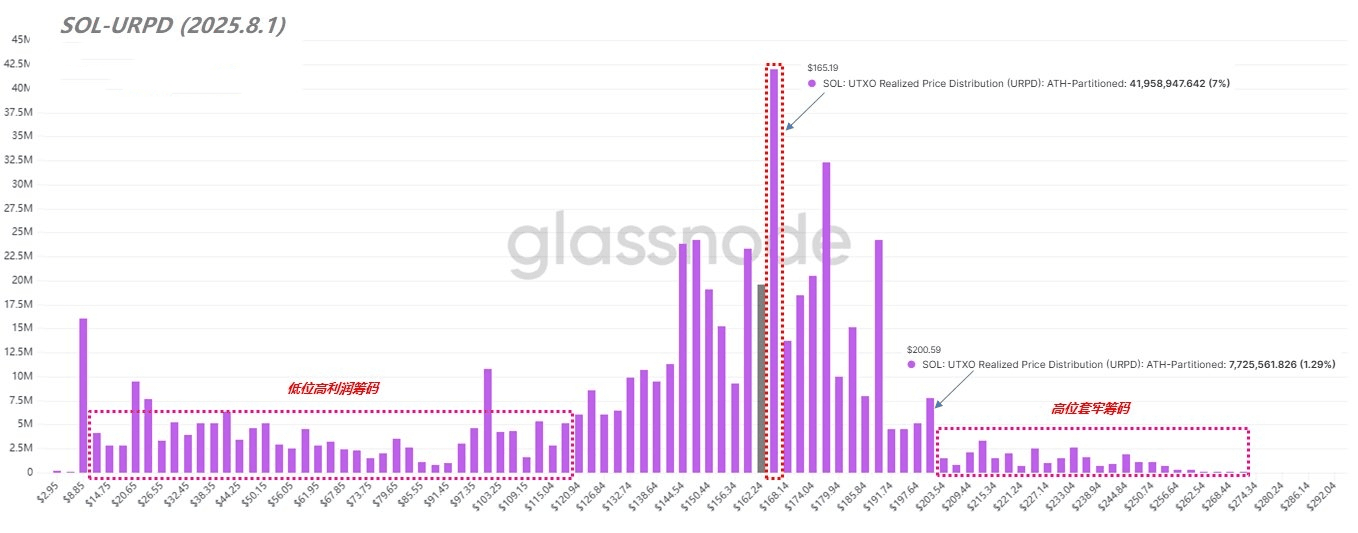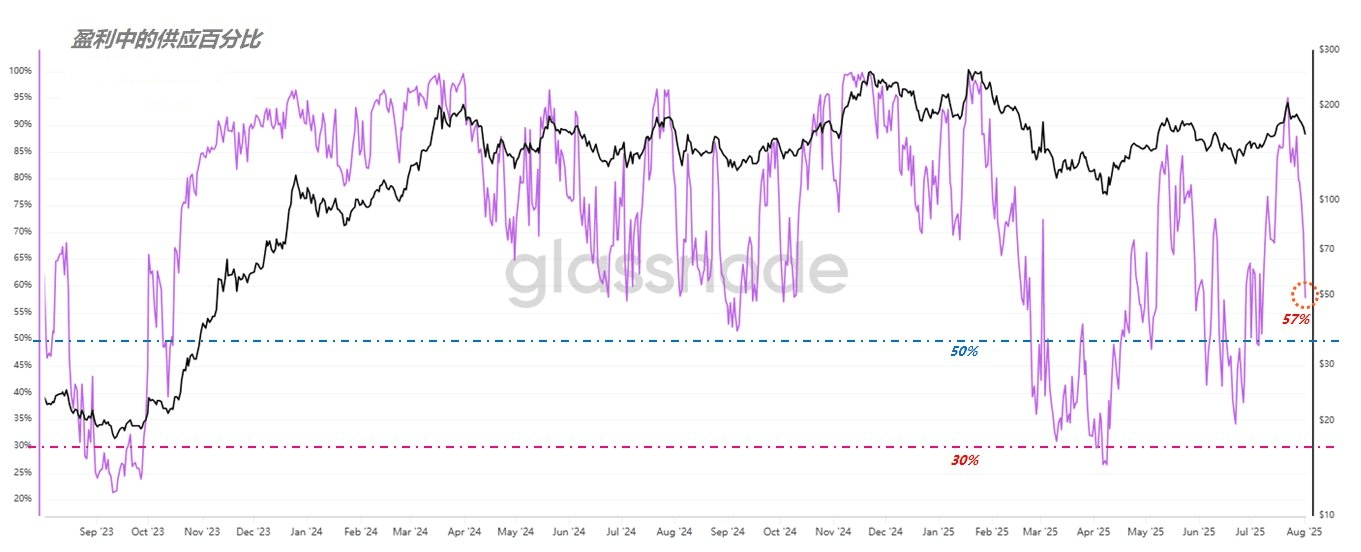According to the latest URPD chip data, SOL is undergoing a hidden but critical market structure change. Data from August 1 shows that the number of chips around $200 has decreased to 7.72 million, a significant drop from 12 million on July 29. This indicates that most of the funds that entered at high positions previously belonged to short-term speculation groups, decisively exiting during the price decline.
This also explains why SOL's volatility is generally higher than BTC's. Bitcoin's high position chip stability is stronger, remaining 'grouped' and still in place even when the market pulls back, while SOL's speculative nature leads to more severe declines.
What is even more noteworthy is the change at the key price level of $165. The number of chips at this position has increased from 35 million to 41.95 million, indicating that there is market support, and potential funds are choosing to layout here, attempting to lock in liquidity.

(Figure One)
The support formed by this type of chip accumulation is fundamentally different from traditional support levels in technical charts. The support in the URPD structure refers to substantial funds willing to trade frequently within a certain price range, resulting in a large turnover. Even if the price temporarily drops below, as long as the chip pile remains steady, it may still become an anchor point for price recovery in the future.
Overall, currently 57% of the SOL market's chips are in a profitable state, meaning that 43% of the circulating chips are still in a floating loss. Compared to the 95% profit phase on July 22, the current market environment is obviously 'healthier', with a higher degree of risk release.

(Figure Two)
Looking back at past cycles, SOL tends to form a stage bottom more easily when most holders are in a loss (i.e., the proportion of profitable chips is below 50%). The logic behind this phenomenon is that as selling pressure decreases and speculative funds exit, prices often stabilize and rebound more easily.
Currently, this ratio is 57%, which, although not fully reaching the ideal range, is relatively close. For players, whether to choose to layout in advance on the higher risk left side or to wait for right side confirmation signals before entering still requires careful judgment based on personal risk preferences.


